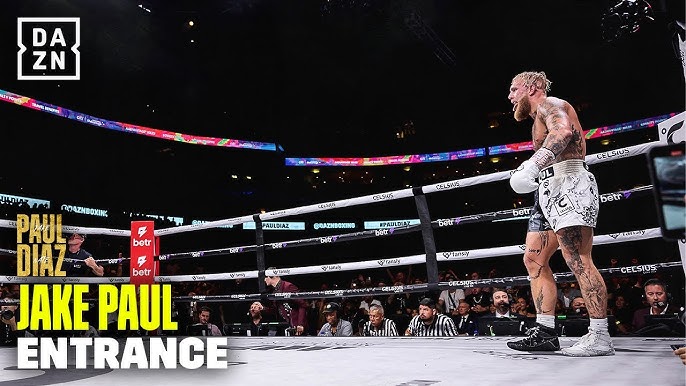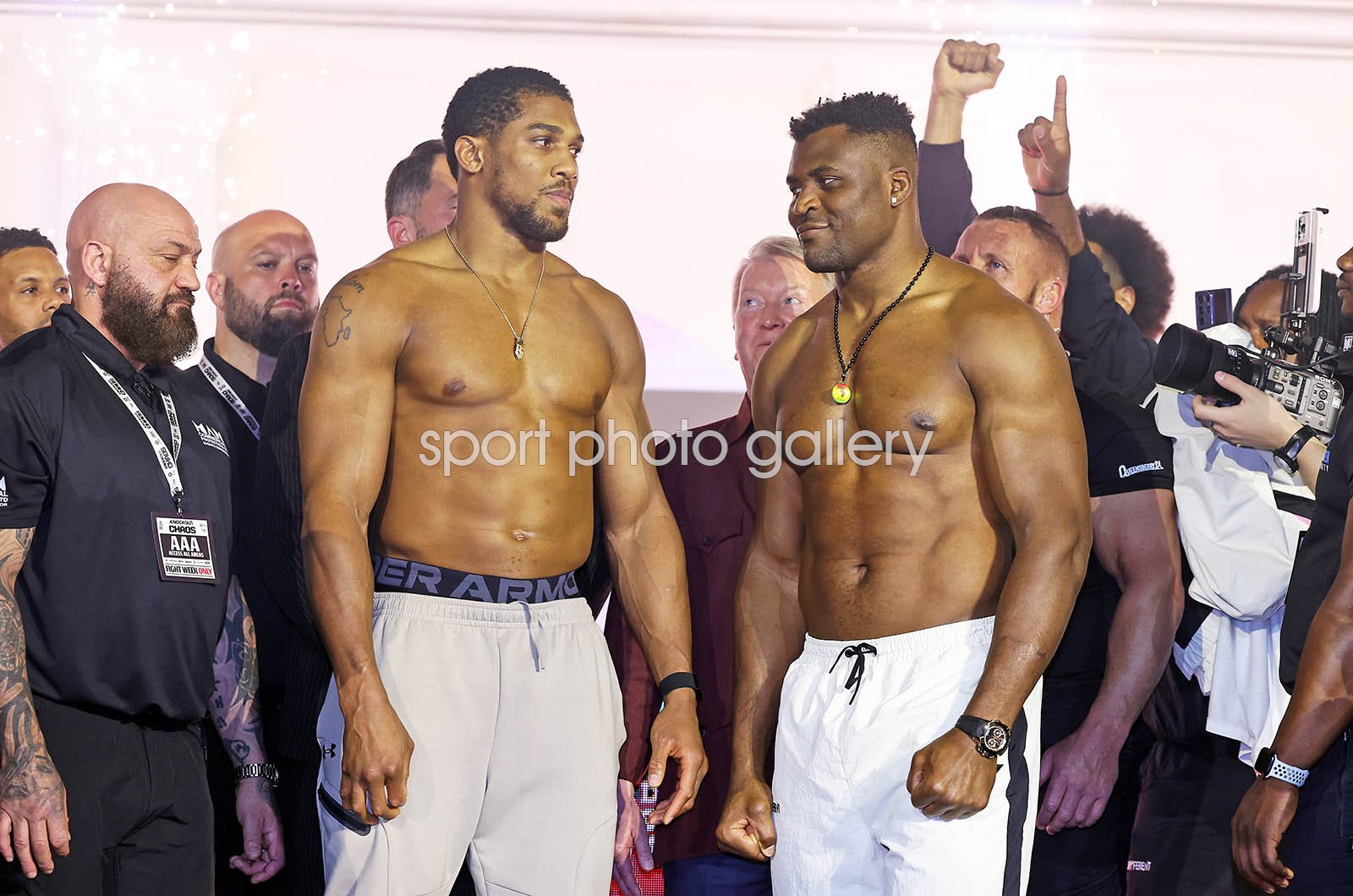Skip to content
Size profiles of the fighters
Jake Paul



-
Height: 6 ft 1 in (185 cm) according to his profile. (tapology.com)
-
Reach: 76 in (193 cm) according to multiple boxing statistics sources. (box.live)
-
Weight: While Jake Paul has fought at various weights, one source reports he weighed in at about 228.4 lbs for his fight with Mike Tyson. (thesportreview.com)
-
Fighting class: Although often billed around the cruiserweight limit (up to 200 lbs), he has moved up to heavyweight territory in certain bouts. (AOL)
Anthony Joshua



-
Height: 6 ft 6 in (198 cm) is the commonly listed height. (tapology.com)
-
Reach: Approximately 82 in (208 cm) according to his fighter profile. (tapology.com)
-
Weight: In his recent heavyweight fights, Joshua has tipped the scales around 250–255 lbs (113–116 kg). For example, 252.5 lbs for one bout. (Sky Sports)
Fighting class: He is a full-fledged heavyweight, having held major heavyweight titles. (Wikipedia)
The size advantage: Height, reach, weight – what the numbers tell us
When you compare the two fighters side by side, several clear differences emerge:
-
Height: Joshua stands six inches taller (6′6″ vs 6′1″). That’s a meaningful margin in boxing terms.
-
Reach: Joshua also has a reach advantage (about 82 in vs Paul’s 76 in), giving him more distance to hit from safely.
-
Weight / mass: Joshua, as a heavyweight, is meaningfully heavier than Paul’s typical fighting weight (250+ lbs vs ~228 lbs or less).
That means more mass, more natural size, more ability to absorb or deliver weight behind punches.
-
Body type and class: Joshua is built for heavyweight.
-
Paul has moved up in weight occasionally, but does not have the long-term track record of fighting in heavyweight as a natural class.
These differences matter a lot in boxing. Height and reach give advantages in controlling range, hitting while staying out of an opponent’s power zone.
Weight and mass influence power, the ability to impose yourself physically, clinch strength, and absorbing blows.
Why the size difference signals a serious advantage for Joshua
Here are the specific ways this size disparity could influence a bout:
1. Range control
Joshua’s extra six inches of height and roughly six inches of extra reach mean he can stay further away and still land.
Paul would need to close distance more aggressively to get inside Joshua’s effective striking range.
The taller fighter often dictates the pace if he uses the jab and movement well.
2. Power and mass behind punches
At ~250 lbs, Joshua brings significantly more mass behind each shot compared to a fighter who often fights closer to ~220–230 lbs or less.
While weight isn’t everything, that extra mass often helps in generating more force (all other things equal).
For Paul, stepping up in weight to heavyweight means he must absorb more punishment and potentially sacrifice some speed or mobility.
3. Defensive burden
For Paul to land effectively, he would likely need to get inside Joshua’s reach or make the taller man commit.
That means more risk. The bigger man can lean back, use the longer jab, and rest on his reach advantage.
Meanwhile, the smaller fighter must be more aggressive to make things happen, which invites counters.
4. Physical resilience and attrition
Heavier fighters can often take more damage (though this is never guaranteed) and can impose a more physical fight—clinches, leaning on the opponent, body shots.
Joshua’s size may provide him a durability edge.
On the flip side, Paul moving up might have to deal with facing heavier punches than he’s accustomed to in his smaller weight class.
5. Psychological and tactical factors
When one fighter is visibly larger in all respects—height, reach, weight—it can affect preparation, strategy, and even mindset.
The smaller fighter may need to adopt a riskier style, throw more volume, show more urgency.
The larger fighter can afford to be a little more measured, using his frame to frustrate and impose.
Caveats & things Paul would need to overcome
While the size delta is clear and favors Joshua, size alone doesn’t guarantee victory.
A few caveats for Paul (and in general) to keep in mind:
-
Speed and agility: A lighter fighter who carries less mass may be quicker, faster on his feet, have better movement and be harder to hit.
-
Paul has shown good athleticism and might aim to use movement to neutralize size.
-
Skill, timing and fight IQ: Big size doesn’t substitute technique.
-
If Paul can slip punches, cut angles, and force Joshua into uncomfortable positions, he could mitigate some of the size disadvantage.
-
Adaptation to higher weight class: Paul moving up in weight (if indeed he steps fully into heavyweight) will need to adapt to slower punches, heavier hitters, and longer rounds.
-
Fatigue and conditioning become even more critical at heavyweight.
-
Ring-rust, experience and class differences: Joshua has years of experience in heavyweight elite competition; Paul has a different career trajectory, fewer high-level heavyweight fights.
Experience matters when dealing with adversity, rounds that stretch out, and very heavy hitters.
In a hypothetical matchup between Jake Paul and Anthony Joshua, the numbers strongly suggest a serious size advantage in Joshua’s favour.
His extra height (approx. six inches), longer reach (approx. six inches more), and heavier fighting weight (roughly 20–30 lbs or more heavier) all work in his favour.
For Paul to overcome those structural disadvantages, he would need to rely on speed, movement, volume punching, and strategic discipline—making Joshua fight off his back foot, cutting the ring, getting inside the reach, and avoiding prolonged heavy exchanges.
Meanwhile, Joshua’s job would be to exploit his range, use his jab, control tempo, and keep the fight on his terms.
Size isn’t everything, but in boxing, structural advantages like height, reach, and weight do matter — significantly so.
In this case, the numbers say Joshua holds those advantages clearly.
If you like, we can look at historical examples where boxers moved up in weight (or fought someone much bigger) and see how that played out — that might give more context on what Paul would face.









